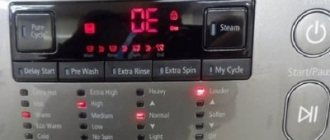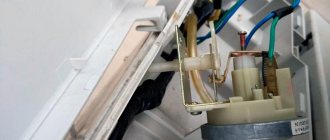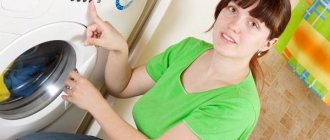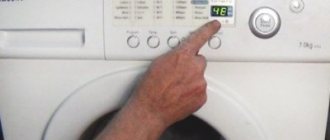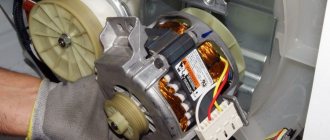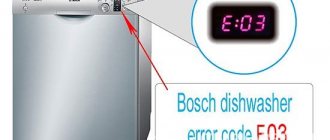Troubleshooting options
So, if you notice that your water heater is leaking, you need to do two things: disconnect it from the power supply and conduct a thorough inspection of the place where the leak is observed. There are several reasons for the appearance of smudges:
- possible manufacturing defects, violation of technical rules during assembly;
- during prolonged operation of the unit, during which proper preventive maintenance was not carried out to maintain operability;
- absence of a magnesium rod in the tank;
- the water has many impurities or is very hard;
- The device was not grounded during initial installation.
In any of the above cases, the tank can be dismantled and repaired or completely replaced with a new one. When water leaks through the thermostat cover, the problem is serious enough that the appliances are out of order. If leaks come from the joints of the water pipes, this means only one thing - the tightness of the device is broken. In this case, the tank cannot be repaired; it must be replaced.
It also happens that if the water heater is installed carelessly, the housing may be deformed, which quite often leads to leakage. The problem may not be immediately noticeable, but if you notice it, you need to take the following actions:
- stop using the heater;
- inspect the suspected place of deformation (most often this is a safety valve);
- empty the tank and attempt repairs. Or call a technician from the service center to be sure to find out what the problem is and fix it.
If the Thermex water heater is leaking somewhere from above, and no deformations are found, and the tank has been regularly serviced and is in perfect condition, it is recommended to return it within the warranty period. If the magnesium rod has not been changed for a long time, then the tank, if it is not enameled inside, is rotten through and through, and then it must be replaced without fail.
Water flows through the pipes, which indicates poor installation when connecting the boiler to the water supply. Many people install plastic pipes, but do not install safety valves, which ultimately leads to water hammer. If such problems are detected, it is necessary to redo the water supply system. If the valve itself is leaking, then the tank is working.
If the tank lid located below leaks, you need to check the heating element. After all, it is precisely because of the formation of scale on it that a leak can form. The seal or seal on the device may also be broken. The repair consists of replacing the heating device, as well as correcting the holder of the latter.
Identifying “symptoms”
Of course, if water gushed out of the tank, flooding the lower neighbors, it is impossible not to notice it. In practice, the leak begins almost imperceptibly. You can tell that the water heater is leaking after minor leaks appear on the body or water begins to drip.
Before talking about leaks, it is worth understanding in what places water may appear. A leak on the body of the water heater is an emergency. Operation of the water heater must be stopped immediately. First of all, the device is disconnected from the power supply, otherwise there is a high risk of a short circuit with all the ensuing consequences. This should be done as soon as the first signs of a leak are discovered.
Water flow control
The second step is calling a specialist. If the boiler is leaking, it is not always possible to cope with the problem on your own. Moreover, in complex cases, repair is completely impossible, and the entire heater will have to be replaced.
The second type of leak is from under the control hole cover. In this case, there is a high probability that the boiler will be revived and returned to operation. If such a leak is detected, you can try to fix the problem yourself. The water heater must be de-energized in any case. No work on equipment connected to the electrical network is allowed.
Is it important to repair a boiler after leaks appear?
The first reason why you should not send your water heater in for repair is the special coating that is applied to the inner surface of the device during its manufacturing process. This coating is glass enamel - a substance that prevents corrosion. Glass enamel is applied in a thin layer, so welding work can cause irreparable damage to such a layer. The consequence will be the rapid occurrence of rust, and, accordingly, end-to-end damage to the boiler body.
It should be remembered that the internal tank belongs to the category of non-separable elements; it will not be possible to get to it without damaging the housing. Why is that? Because the boiler belongs to the category of short-lived household appliances. Therefore, you will need not only a standard tool, but also a special one. Or contact the appropriate workshop, but the price of repairs does not meet expectations - it is best to purchase a new device.
For a long and high-quality service of the boiler, it is necessary to ensure proper care by installing cleaning filters between the installation and the valve, replacing them periodically with new ones, doing grounding according to the instructions and using safety precautions.
To flush the installation, you should seek the help of specialists or use proven methods that will help avoid possible damage to the equipment and make further operation possible.
To prolong operation, you should set the optimal temperature to 50 degrees and periodically clean it, monitoring the condition of the rod. The device must be connected to the water supply system using a special magnesium filter. It will remove water hardness.
Important! If the boiler is leaking, you need to determine the cause of the phenomenon as quickly as possible and eliminate it. To avoid breakdowns, follow the instructions and operating rules of the equipment in your actions.
Is repair possible?
In some cases, it is possible to repair the water heater yourself. However, the process is not as easy as it might initially seem.
The first step is to understand the cause of the problem. To do this, you should prepare and take tools that may be useful during the inspection:
- hoses (needed to drain liquid);
- screwdriver;
- wrenches (socket, tubular, adjustable);
- multimeter
Afterwards, be sure to disconnect the device from the power supply and drain the liquid. The device tank must be empty. Only after these manipulations do they proceed to inspection, identifying the causes of breakdown or leakage.
In some cases, the problem can be solved with minor repairs. In others, you will need to completely replace the water heater with a new one. It is advisable to do this before the warranty expires.
Here's what to look for during your inspection:
- Water leaks appear in the joint areas of the pipes. The cause of the malfunction is a leak in the water heater tank. Repair is not possible. The boiler will have to be replaced.
- Leakage is observed in the upper part. If the device has been properly maintained on a regular basis, the magnesium rod has been replaced on time, but there is still a leak, repairs will not help. You'll have to buy a new boiler. Also, the entire water heater must be replaced if it has an old magnesium rod that has not been replaced during prolonged use. This provokes rotting of the tank (in the case of a non-enameled inner surface).
- The tank cap is leaking. In these circumstances, a new heater is installed.
- Leaking directly in the tank. The most unpleasant situation is that the leak comes from the bottom of the tank. The most likely scenario is that sediment builds up and eats away at the bottom of the tank. Repair is not possible. The fact is that the water heater is a complete device with a single body and enameled internal walls. Once the enamel surface is damaged, it cannot be repaired.
The first place a plumber will check is the drain valve. It is located at the bottom of the tank. Responsible for draining sediment from the water heater. The valve is easy to replace, so this situation is the simplest.
It is important to remember that not every small puddle of water found at the base of a water heater is due to a leak. Condensation may form on the pipes and fixtures that surround the water heater.
As condensation accumulates, liquid will begin to drip, accumulating on the floor. This is especially true in basements or in damp weather.
Boiler design and operating system are more complex than one might think. For this reason, the best way is to order repairs from specialists or purchase a new device.
The appearance of scale and salt deposits on the heating element
Corrosion and other formations form inside the tank for the following reasons:
- Errors were made in production. For example, the use of materials not designed for such loads. In this case, all that remains is to apply for warranty.
- Appearance of cracks. Once microcracks form, the boiler cannot be restored - the process becomes irreversible. Enameled tanks are characterized by instability to changes in shape. The expansion that occurs when heated deforms the container. Due to this, defects are formed.
- Low quality stainless steel. Metals are more resistant to expansion or contraction, but the use of expensive steel will significantly increase the price of the equipment. Food-grade stainless steel, which is preferred by manufacturers, prevents the formation of salt deposits for a certain period of time - about one year.
To prevent scale formation, storage water heaters use magnesium anodes. They are a rod with a magnesium alloy applied to the surface.
Magnesium is characterized by a low electrochemical potential. Salt, when interacting with it, will remain on the surface instead of settling on the inner wall of the tank.
What to do?
There may be several reasons for excessive water pouring out through the fitting of the valve device, and the solution to the problem can vary greatly in complexity and implementation technology:
- if an element loses its protective qualities due to wear, including spring stretching and cracking of the poppet device, the fittings are replaced;
- if the valve breaks down as a result of water hammer with a sharp increase in pressure in the water supply system, it is also advisable to replace the element with a new one with similar indicators;
- if the fitting or the internal part of the system is clogged with debris and scale, it is advisable to clean it, partially or completely replace it;
- if the leak is caused by initially incorrect installation of the protective unit, then it is necessary to carry out diagnostics of the safety valves, including measuring the relief pressure using a pressure gauge, followed by replacing the valve if necessary;
- if excessive leakage of water and incorrect operation of the fittings of the water heating device are caused by non-compliance with installation requirements, then the protective unit should be moved to the correct location.
After the correct relocation of the protective fittings or complete replacement of the safety assembly has been carried out, the excess flow of water should stop. The opposite effect is observed when the nominal pressure level declared by the manufacturer does not correspond to real indicators.
No less often, the cause of leakage is an incorrectly selected or too high temperature mode for heating water, as well as excess water pressure inside the system, so the purchased water heating equipment must fully comply with all requirements.
Correctly installed boiler
It is very important to remember that the operation of water heating equipment without accessories such as a safety valve device is strictly prohibited. When installing an alternative hot water supply system in conditions of excess pressure in the main water supply, a special reducer must be installed at the inlet, capable of regulating such parameters
A prerequisite for comfortable and safe operation of water heating equipment equipped with a safety valve device is the supply of a flexible transparent hose to the drainage hole, the second end of which is discharged into the sewer system or a container specially installed to collect the released water.
Main causes of leaks
If your water heater is leaking, the first thing you need to do immediately is disconnect the device from the electricity. Next, a thorough examination is carried out, during which you need to try to determine where exactly the water is flowing from.
And there may be several reasons for this. Here are just a few of them:
- the boiler has been operating for quite a long time and during this time it has never undergone maintenance;
- a magnesium anode was not installed in the water heater tank (or it had not been changed for a long time);
- the water heater tank is not grounded;
- the composition of the water that flows through the water heater tank is very poor;
- presence of a manufacturing defect.
Water heater device.
Regardless of the reasons why your water heater tank leaked, you need to remove it and make repairs or buy a new boiler.
This may also be the final stage in the operation of your water heater. The main cause of water heater failure may be a heating element (heating element) broken due to scale.
This problem occurs most often, so it is very important to periodically clean the tank and heating elements that make your boiler work
There are several reasons why water drips from the boiler:
- manufacturing defect;
- poor-quality installation of the device;
- the anode is destroyed;
- the heating element is faulty;
- the valve has deteriorated;
- the gasket is worn out;
- blockage
For repairs you will need:
- adjustable wrench (large);
- Screwdriver Set;
- tubular keys;
- a set of simple keys;
- drain hose;
- rags;
- pad;
- cutter.
- Shut off the water supply
- Wait several hours for the water in the boiler to cool down.
- Remove the heater.
- Conduct an external inspection. If he has not identified the cause of estrus, proceed to analysis.
- Remove the protective cover using a screwdriver. You'll have to use force.
- Drain the water.
- Check the inlet and outlet pipes. Touch the insulating gasket. If dry, proceed to the next steps.
- Check valve. If it is not damaged during installation, the search for the cause of the leak continues.
- If the spiral or blockage is to blame, you will have to open the thermos.
- Remove the wires after taking a photo of the connections.
- Unscrew the fastening elements of the heating element and thermostat.
- Inspect the heating element.
- Clean the inside of the tank from dirt.
If it is not clear why the water heater is leaking, its use is stopped and the device is sent in for repair.
Possible manufacturing defect. If there was an error during installation, you will have to correct the problem at your own expense.
If drips appear on the body of the device, you should not immediately proceed with dismantling; you must first carry out a preliminary visual inspection. This is a very important method that will help quickly identify the leaky area.
The correct inspection sequence should be as follows:
- Fill the water heater with water up to about. This should not be done forcibly, since leaks can appear only when the water heats up.
- Inspect the bottom of the water heater, especially the seams and seal of the heating element cover.
- Inspect the walls of the device. In these places, leakage occurs extremely rarely, only during long-term operation of the water heater.
- Inspect the top.
The most common causes of leakage
There are several reasons why a boiler leaks. The ability to make repairs yourself depends on how quickly and correctly they are identified.
Deformation of the outer shell
This problem can arise if the rules for installing the boiler are violated, and not through the fault of the manufacturer. Dripping water on the outer shell of a water heating device can be noticed almost immediately after its installation. The whole point is that there is no safety valve or it is broken.
Even after the use of the water heater has been stopped and the water supply has been turned off, hot water still remains in it.
When water cools, its volume decreases and the tank of the device contracts. After all the liquid has been drained from the system, a vacuum occurs inside the tank. If at this time the safety valve is broken or missing, the container will become deformed. Further, when the boiler is filled and turned on, the water expands, heating up, and the pressure increases, which leads to expansion of the tank. Such malfunctions explain why the boiler is dripping.
Storage tank leaking
If liquid flows through the liner, it is the storage tank that is leaking. This problem may arise due to gross violations of installation or connection rules. When connecting a water heating device, it is highly undesirable to use plastic pipes. If pipes of this type are nevertheless used because they look more attractive, the hydraulic shock will be transmitted to the tank, which will gradually destroy it.
Heating element leaking
Not all models have a special hole through which water flows when the heating element begins to leak. You need to check its availability when purchasing a boiler.
Safety valve leaking
This boiler element is a small tap with a hole in it. The problem can be easily fixed by replacing the part with a new one.
Storage tank lid leaking
If such a problem is observed, it may be a leaking heating element, which can be caused by the accumulation of a large amount of scale.
After replacing the heating element, the problem will be resolved.
Leakage from under the heating element seal or under its bolts
If water flows from under the seal, you just need to slightly tighten the nuts that secure it. In the second case, the heating element needs to be replaced.
Supply channels are not tightly connected
This is the most common reason why a boiler leaks. It is not difficult to fix, you just need to check all connections.
Inlet connections
Leakage at the top without visual damage
If leakage appears in the upper part of the water heater, and no deformations were detected during visual inspection, installation and connection were performed correctly, the magnesium rod was checked and replaced, it is better to return such a device to the store before the warranty period expires. A leak can only be repaired if the tank is made of stainless steel.
The magnesium rod must be changed periodically. If this is not done, the surface of the device will become unusable after some time, and you will have to buy a new device.
Lack of preventive maintenance
Too hard water or the presence of a large amount of impurities in it affects the quality of the boiler. During its operation, it is necessary to periodically carry out preventive maintenance, cleaning from contamination and replacing worn out elements.
Can a leaking tank be fixed?
In most cases, incorrect installation leads to disastrous results, due to which the boiler cannot be repaired. This is due to the following factors:
- Modern devices have an internal coating made of glass enamel. Such surfaces, when interacting with welding electrodes, are quickly destroyed, and it is completely impossible to restore them;
- There are models with an internal surface made of stainless metal or plastic. Such copies cannot even be checked, so all attempts at dismantling will be a waste of time;
- A water heater with a tank is a single structure that cannot be disassembled without mechanical damage to the shell, leading to corrosion.
Attention! If signs of a leak are seal failures or the appearance of scale on the heating element, it is quite possible to eliminate them yourself. To do this, you need to purchase similar spare parts in accordance with the boiler model number
Dismantling must be carried out in accordance with the instructions for using the device.
Professional services at home
A boiler is a fairly reliable device that is not particularly demanding in terms of maintenance and operating conditions, however, there are errors in operation that can cause problems.
If the water in the water supply is hard, this gradually leads to the formation of scale on the heating element and lime deposits inside the tank, so all internal components and assemblies need to be cleaned as soon as possible. Our technicians are well acquainted with all the features of these processes, so they will quickly and efficiently perform diagnostics, identify all existing problems, and then promptly eliminate them. We have an urgent repair service:
- Masters respond to calls promptly at any time of the day;
- Diagnostics are performed at home;
- Depending on the instructions in the technical documentation, the most rational method of repair is selected;
- We issue documents with a guarantee for work performed and parts installed;
- We test the device in all operating modes to ensure its serviceability;
- The prices of our services are not high, so people turn to us very often;
- We offer discounts on a number of the components we use because we purchase them directly from manufacturers;
- The technician who arrives on call will definitely give recommendations on the correct operation of the boiler, caring for it, as well as other points, so that you don’t have to think about problems and breakdowns for a long time.
Examples of what to do
Often you can repair the device and fix the leak yourself. To do this, you need to determine the cause of the phenomenon, take the necessary tools and act according to special instructions.
Before starting work, you need to take an adjustable wrench with an electronic tester, tubular wrenches, a rubber hose for draining fluid, socket wrenches, a screwdriver and a knife.
It is worth noting that to repair minor damage, minimal knowledge is sufficient. However, it is better to trust full-fledged repairs to qualified specialists.
You also need to look at what the magnesium electrode looks like. If it becomes very thin or shortened in length, then this water heating element must be replaced. It is also recommended to use a multimeter to check whether the thermostat is working properly, whether there are any power leaks, and then replace the faulty types of elements or seals.
Next, you should replace faulty elements or seals. To choose the right gasket, you need to take the old one with you to the store. In such a situation, you can quickly find a similar model. After changing parts, the boiler must be reassembled in the order in which it was disassembled. If the device leaks in the place where the liner is connected, then in order to eliminate the breakdown, you need to repack the threaded connections.
If there is a tap in the connection, then for sealing it is better to use plumbing flax with a special investment paste, rather than fum tape. This type of seal will help turn the tap back so that it is convenient to use. The tightness of threaded connections will not be affected. With fum tape, this option is not possible. After the assembly has taken place, open the tap and fill the boiler with water, check that the heating element is turned on.
Important! Purifying water with a polyphosphate or magnetic filter can increase the service life by up to 40 percent. In addition, to ensure uninterrupted operation of the boiler installation, there is no need to set the heating temperature to high
By following these recommendations, you can achieve a long service life of the boiler without trouble.
Causes of boiler leakage
Let's look at why water flows from the boiler, where the reasons come from and how to avoid them. The tank is made of 2 types of material: stainless steel or steel with an enamel coating - but in any case using a welded method. For any structure, the weld is a weak point, which, under sufficient load, is destroyed first. That is, if the boiler is leaking, it means the tank has depressurized. There can be many reasons for this: from incorrect installation to completely indirect ones - pressure drops in the water supply system. To disable a stainless steel tank, it is enough to use a grade with a chromium content of about 12-15%.
Characteristics of the leak will help determine its cause, as well as possible elimination (provided that the integrity of the tank is preserved):
- The most optimistic option is if the boiler is leaking from below: water flows from under the plug and through the pipes. So there is a possibility of incorrect installation of the gasket, deformation of the pipes, failure of the heating element - all this can be corrected by replacing it with new elements.
- Water can exit from the top of the boiler only under pressure, i.e. at high temperature. If the automation fails, temperature control stops. Depending on the type of sensor that has failed, or the relay itself, the heating elements may not turn on at all or may not turn off when the set temperature is reached. In the second case, after reaching 100 °C, water turns into steam, increasing in volume by 22.4 times. Boiling 50 or more liters of water explains why the boiler is leaking. The structural changes are so strong that the safety valve does not cope with its task, and water under pressure “finds” another outlet. When installing a check valve, an explosion is possible.
- Deformation of the tank due to high pressure in the system. Its surges lead to water hammer. The accumulation of debris in the boiler (solid components) is driven by water flows and turns into abrasive. For an enameled surface, it is enough to form a small crack or chip for corrosion to melt in this place. 0.5-1 year is enough to see how the boiler drips.
- One of the common reasons is seam corrosion (here it is most active), since the enamel layer is destroyed. This could be a manufacturing defect (violation of technology or equipment malfunction). Stainless steel tanks require the use of steel with a minimum chromium content or its uneven distribution throughout the metal. Localized corrosion can then occur throughout the body of the tank. But most often this is a welded joint (the composition and structure are damaged).
Main reasons
A water heater leaks for several reasons. Before identifying the problem, it is necessary to inspect it in detail. Most often there are several types of breakdowns.
The body has changed shape
The outer shell of the unit sometimes changes shape after installation. This is the fault of the user who forgot to connect the safety valve. This element allows you to avoid overfilling with water. It is located on the liquid supply line. When water enters the container, the valve shuts off its supply. If it is not there, water will leak in.
A breakdown of the valve indicates that it should be replaced with a new element. This can be dealt with even without equipment repair skills.
Deformation also occurs when pipes not made of durable materials are used during installation. This will lead to water hammer and pressure drops destroying the container. If the boiler is leaking due to deformation, it cannot be repaired; you must purchase a new product.
The deformation cannot be corrected; you need a new device Source onlinetrade.ru
See also: Catalog of companies that specialize in engineering systems (heating, water supply, sewerage and others) and related work
Damage at work
If the question arises as to why the water heater leaked in the upper part, then you should inspect it from the outside. Perhaps the problem lies with unscrupulous manufacturers. If there is a warranty, the device should be returned to the store before the leak leads to flooding of the neighbors.
The design of modern devices does not allow for repairs; the tank cannot be welded. During welding, the enamel will be destroyed and corrosion will form, which will corrode the container. This will only increase the cost of repairs in the future.
The heating element is covered with scale
If the water heater is leaking from below, the reason is that scale has appeared on the surface of the heating element. A new heating element will be required. You can purchase a suitable item in the store. After removing the old part, it is important to clean the inside of the device with vinegar and soda. This mixture will help get rid of scale.
Along with the heating element, it is important to replace the magnesium rod.
Errors were made during installation
If your water heater leaks, what to do will become clear after analyzing the possible causes. If liquid appears from under the sealing ring, tighten the nuts. Sometimes water leaks over the bolts that secure the heating element. In this case, you will have to buy a new device, since the thin walls of the container will be damaged during welding.
If the cold and hot water pipes are not connected tightly, the boiler will also leak.
Correct installation guarantees the serviceability of the device Source oboiman.ru
Membrane life expired
When the water heater is leaking from below, you should check the condition of the inspection hole in the lid. The elasticity of the rubber gasket on the flange may have decreased. To detect this, you need to turn off the device, remove the cover from the bottom and inspect the gasket. If its condition worsens, a new one needs to be installed. In the store you should buy a product that matches the brand of heater.
The bottom is flowing
If an Ariston water heater leaks from below, what to do can be understood if you find out the reason. Such breakdowns occur frequently and are accompanied by the boiler leaking from below. What to do in this situation is to inspect the lower part of the case. The damaged area can be anywhere: on the pipes, linings, heating element.
To determine the possibility of restoring the water heater, preparatory work is carried out and the problem area is identified.
The main causes of leaks and methods for eliminating them
In the process of leaking the device, it is first necessary to establish the source of the negative factor. They can differ significantly in characteristics, so they can be identified quickly and without professional skills. It is best to study the water heater according to the instructions included with the unit. Most models have a warranty card designed for such situations. To avoid aggravating the problem, the device must not be opened.
Hull deformation
The outer shell of the equipment may become deformed after installation. The cause of the unfavorable behavior of the device is considered to be incorrect installation of the unit. Often the consumer forgets to connect the safety valve. The product is located on the main liquid supply between the shut-off valve and the valve element. This part is designed to protect the tank from overfilling; it is during this process that deformation occurs.
Often the consumer forgets to connect the safety valve
If the valve is installed, but water also flows through the supply pipe, this fuse should be removed and a new one installed. Repairs will not take much time and do not require professional knowledge of the device.
Another reason for deformation is the use of low-quality pipes during installation. Powerful hydraulic shock with pressure changes slowly destroys the structure of the product.
Healthy! If the body is deformed, the boiler cannot be repaired; it must be replaced with a new model, while observing the correct connection technology.
Manufacturing defects
The leakage may be from the top of the housing; if in this situation there are no visual deformations of the unit, and the magnesium rod was mounted during connection, then a manufacturing defect of the equipment is possible. During warranty service, it can be returned back to the supplier.
Modern models are designed with designs in which the tank cannot be repaired. The container cannot be welded, because during the welding process, a layer of enamel breaks off, after which corrosion forms, spreading over the entire surface of the device.
Spent heating element
A leak may form under the tank cap, which indicates scale accumulation on the heating element. If this symptom is detected, it is necessary to replace this part with a new one. The purchase of a heating element should be similar to the outdated one; such a part can be purchased at a spare parts store for water heating devices. Before dismantling, you must thoroughly clean the inside of the device with a solution of vinegar and salt. This mixture quickly corrodes salt deposits without damaging the surface of the tank.
If there is scale on the heating element, the element must be replaced. Important! The heating element is replaced together with a special magnesium rod for long-term operation of the water heater
Poor installation of the device
Liquid leakage is possible from under the sealing ring of the heating element. To eliminate this problem, simply tighten the nuts more tightly. In some cases, leakage occurs under the mounting bolts of the heating element. It is impossible to eliminate this unpleasant factor; you will have to purchase a new unit, because the walls of the water heater will begin to warp during the welding process.
Leakage under the heating element mounting bolts requires installation of a new unit
Another reason that occurs quite often is a loose connection to the cold water inlet and hot water outlet pipes. Such signs may appear when installing the device yourself, when low-quality fittings or incorrect materials for seals are used.
Gasket wear
A leak in the inspection hole located in the plastic cover at the bottom of the equipment indicates a loss of elasticity of the rubber gasket on the flange. An accurate determination of this cause can be carried out after turning off the equipment: the lower cap is removed and the problem area is visually examined.
Replacement of the sealing gasket must be carried out strictly in accordance with the boiler model number, so that the product fits tightly to the working parts.
Replacement of the gasket must be carried out in accordance with the boiler model number
Causes of leakage and solutions
After disconnecting the Thermex hot water boiler from all utility networks (water, electricity) and draining the water, it is carefully removed (for a wall-mounted structure) and placed on a clean rag on the floor, with the taps placed at the top.
Then they do a thorough internal and external inspection and study the nature of the leak:
- If it flows from above or from the side along the body, this indicates the presence of a fistula, one or several.
- A lower leak indicates the need to change the magnesium rod and clean the element from scale formation.
- If the boiler is leaking from the plugs, this indicates an urgent replacement of the heating elements and the need to check the tightness.
- If there is a leak from the plastic cover, then the boiler is completely unusable due to problems with tightness; water escapes from the plugs, along the supply and return. This failure cannot be corrected; a new device is required.
Reasons why the tank leaked from above:
- Manufacturing defect.
- Violation of the rules for operating the heater and carrying out preventive measures.
- Lack of magnesium rod.
- Tap water is of poor quality and contains a lot of rust and other suspended substances.
- The work tank is not grounded.
Manufacturing defects
This situation is extremely rare today, given the high level of manufacturing technology and the requirements of European and domestic water supply standards and regulations.
However, if water is leaking and inspection reveals a rusty hole in the top or side of the heater, but no deformation is detected, and the magnesium rod is in satisfactory condition and connected as required, then the leak may be due to a manufacturing defect. If such a device is under warranty, then the best solution is to return the unit to the store.
The modern design of the water heater body cannot be repaired, since it cannot be welded. When welding is used, the enamel around the fistula is damaged, intense corrosion processes begin in this place and rusty water flows.
In order to carry out the entire range of repair work, including anti-corrosion protection, significant funds will be required, and the cost of repair will be almost equal to a new unit, not to mention the aesthetic side and the lack of a guarantee for the operation of such equipment.
Installation quality
Poor installation of an electric boiler is caused by unprofessionalism of people, or installation rules are violated. The most common failure of supply and return leaks is the use of incorrect seals or defective fittings. If the water heater leaks from under the heating element's sealing ring, you can tighten the connections more tightly.
If there is a leak in the bolts of the heating element, this is one of the most negative scenarios for an emergency leak and you will need to buy a new unit, since welding in this case cannot be used categorically, due to warping of the walls of the heating tank.
Damage to the boiler body
Deformation of the tank can be detected even a day after installation. The fault here lies with the installation personnel who forgot to install the safety valve. Excess pressure is the main cause of deformation.
If the boiler leaks for this reason, the installation defect cannot be eliminated. A complete replacement of the equipment will be required. If the fuse is installed, but water flows, replace it with a new one.
Deformation can also occur when low-quality pipes are used for piping. The resulting water hammer due to a change in medium pressure destroys the storage tank; this process is not as fleeting as the above-mentioned failure, but they have the same consequences.
Faulty heating element
A leak can occur when the heating element seal leaks. A simple repair will be required, consisting of tightening all fasteners. If a leak has formed under the heating element mounting bolts, it will not be possible to correct such a failure, due to the fact that the walls of the tank body are thin, jewelry work is required and, most likely, only a complete replacement of the boiler will be required.
This is what a heating element looks like, which needs to be changed urgently
If there is a leak from under the tank lid, scale may have formed on the heating element and it will need to be replaced and the inner surface of the boiler must be cleaned chemically or mechanically.
A solution of acetic or citric acid can be used as a chemical solution. When installing a new heating element, the magnesium rod must be replaced for anti-corrosion protection.
Loose connection of the liner
This is the most common cause of electric heater leaks. It is easy to fix and requires checking all connections.
Types of leaks:
- If the source is poor-quality connections in the supply and return of the boiler, this can also be easily eliminated by repacking the threaded connections.
- It is very serious when a leak is discovered from under the cover covering the electrical part of the equipment from below. Immediately turn off the power to the boiler, remove the bottom cover and use a flashlight to locate the leak.
- If it comes from under the cover, you can try to eliminate it by tightening the bolted connections on the cover. If the leak cannot be eliminated, drain the water and change the gasket.
Gasket wear
Very often, the location of the leak is difficult to determine, since the tank is covered with thermal insulation and a decorative casing, and water can escape in the area where the thermometer is located. You need to know that there is a special hole at the bottom of the installation, which demonstrates that the container has a fistula.
Boiler installation example
If the boiler has leaked through the hole in the tank inspection cap, it looks like the flange gasket has lost its elasticity. In order to accurately diagnose a failure, disconnect the boiler from water and electricity, remove the bottom cover and carefully inspect the body.
If gasket failure is confirmed, it will need to be replaced. To do this, purchase an absolutely identical gasket according to the brand of heater in the store.
Pressure regulator malfunction
The water pressure reducer is designed to adjust the fluid pressure. Stable operation will prevent leaks and damage to plumbing equipment. However, improper operation of the pressure regulator can lead to problems with the boiler. Let's consider two such situations:
- If the fluid inlet pressure is slightly higher than that set by the manufacturer. Some models of flow-through water heating equipment are equipped with a built-in lock: they will not turn on until the pressure returns to normal. In the case of storage devices, the heated liquid will be released from the valve into the sewer system due to the pressure reducer. This will lead to unnecessary waste of water and electricity.
- If the inlet pressure greatly exceeds that indicated in the equipment passport, leaks or breakdowns of not only water heaters, but also other equipment connected to the water supply: dishwashers and washing machines, thermostats are possible.
Causes of leakage
The causes of leakage can be varied:
Technological violations during installation. Installing a boiler is generally simple, so many homeowners try to save money on this service
It seems that everything can be easily done with your own hands, and it is not so important that you do not have the necessary skills for this. The result is gross violations and a leak in the near future
The most common mistake made by would-be installers is an uninstalled gearbox. As a result, the safety valve cannot cope with excess pressure, water hammer occurs, the tank body expands and its integrity is compromised. Of course, the tank most likely will not burst in one go, but constant water hammer will sooner or later do its job.
- Lack of maintenance. An important element of the boiler is the heating element, which heats the water. The water in the water supply systems of Russian cities is not of ideal quality, so scale inevitably deposits on the heating element and the walls of the tank. If you don't clean the tank, it will fail very quickly.
- No overpressure relief valve. Another violation often committed by half-educated masters. Such a case will not be covered by warranty, and you will have to spend a lot on repairing the unit.
- Incorrect grounding or its complete absence.
- Corrosion of the walls and elements of the boiler. No matter how well it is protected from corrosion, it is impossible to completely avoid this negative impact. Stray currents increase the susceptibility of metals to corrosion, and their presence cannot always be controlled.
- The service life of the unit has expired. The average service life of a boiler is 5–8 years. Of course, there are models that can last longer, but this is rare. Most often, the boiler begins to leak much earlier.
Causes of water heater leaks
The cause of the leak may be improper installation, corrosion of the tank or a leaky gasket.
If the boiler is leaking, you must immediately disconnect it from the network and shut off the water supply to it. To reduce the pressure, open the hot water tap on the mixer. These steps will eliminate the risk of electrical shock and flooding. After this, you should wipe the product with a dry cloth and carry out an external inspection. It will help you determine the source of the problem and evaluate the possibility of solving it yourself.
If the boiler is leaking, the reasons for this phenomenon may be the following:
- Incorrect installation. During installation, the new device may have been hit or dropped. As a result of such actions, cracks appear in the tank or the seams between the pipes and the body diverge. If the boiler is leaking from below, there is a possibility of poor quality of the connection.
- Lack of maintenance. It consists of periodically cleaning the container and replacing worn parts. The formation of sediment hardens the gasket, gradually penetrating into the cracks, thereby causing leakage. Another reason may be rubber gaskets and FUM tape at the joints, which over time lose their original characteristics.
- No overpressure relief valve. This part is designed to maintain working pressure in the tank and discharge liquid when it increases to critical values. When there is no safety valve, the tank constantly contracts and expands due to changes in temperature and pressure. All this leads to its rapid wear.
- Incorrect grounding or its complete absence. The consequences of violating the rules for connecting an electrical appliance are electrolytic corrosion, which corrodes even parts made of non-ferrous metal.
- Corrosion of the internal parts and walls of the boiler. This happens when the water quality is low and there is no anode. The salts deposited on the flask first destroy the enamel, and then the metal. A leak can occur anywhere—top, bottom, and side of the bulb.
- Long service life of the unit. If the boiler is leaking and there are drops at the bottom, this may indicate wear of one of the parts - the heating element, thermostat cylinder or tank. The possibility of repair depends on the nature of the fault. With prolonged inactivity, water blooms inside the tank, which is indicated by an unpleasant odor emanating from the drips.
When a boiler leaks, you have to spend time and effort to restore its functionality. However, you first need to prepare for work so as not to be distracted from it at the most crucial moment, when it turns out that something necessary is missing.
Causes of leaks and what to do?
In the process of leaking the device, it is first necessary to establish the source of the negative factor. They can differ significantly in characteristics, so they can be identified quickly and without professional skills.
It is best to study the water heater according to the instructions included with the unit.
Most models have a warranty card designed for such situations. To avoid aggravating the problem, the device must not be opened.
Hull deformation
Safety valve
The outer shell of the equipment may become deformed after installation. The cause of the unfavorable behavior of the device is considered to be incorrect installation of the unit.
Often the consumer forgets to connect the safety valve.
The product is located on the main liquid supply between the shut-off valve and the valve element.
This part is designed to protect the tank from overfilling; it is during this process that deformation occurs.
If the valve is installed, but water also flows through the supply pipe, this fuse should be removed and a new one installed. Repairs will not take much time and do not require professional knowledge of the device.
Another reason for deformation is the use of low-quality pipes during installation. Powerful hydraulic shock with pressure changes slowly destroys the structure of the product.
Healthy! If the body is deformed, the boiler cannot be repaired; it must be replaced with a new model, while observing the correct connection technology.
Manufacturing defects
The leakage may be from the top of the housing; if in this situation there are no visual deformations of the unit, and the magnesium rod was mounted during connection, then a manufacturing defect of the equipment is possible.
During warranty service, it can be returned back to the supplier.
Modern models are designed with designs in which the tank cannot be repaired.
The container cannot be welded, because during the welding process, a layer of enamel breaks off, after which corrosion forms, spreading over the entire surface of the device.
Spent heating element
A leak may form under the tank cap, which indicates scale accumulation on the heating element. If this symptom is detected, it is necessary to replace this part with a new one.
The purchase of a heating element should be similar to the outdated one; such a part can be purchased at a spare parts store for water heating devices.
Before dismantling, you must thoroughly clean the inside of the device with a solution of vinegar and salt. This mixture quickly corrodes salt deposits without damaging the surface of the tank.
Poor installation of the device
Liquid leakage is possible from under the sealing ring of the heating element. To eliminate this problem, simply tighten the nuts more tightly. In some cases, leakage occurs under the mounting bolts of the heating element.
It is impossible to eliminate this unpleasant factor; you will have to purchase a new unit, because the walls of the water heater will begin to warp during the welding process.
Another reason that occurs quite often is a loose connection to the cold water inlet and hot water outlet pipes.
Such signs may appear when installing the device yourself, when low-quality fittings or incorrect materials for seals are used.
Gasket wear
A leak in the inspection hole located in the plastic cover at the bottom of the equipment indicates a loss of elasticity of the rubber gasket on the flange.
An accurate determination of this cause can be carried out after turning off the equipment: the lower cap is removed and the problem area is visually examined.
Replacement of the sealing gasket must be carried out strictly in accordance with the boiler model number, so that the product fits tightly to the working parts.
Water runs in the upper area without external damage
First you need to check the following conditions:
- no problems were found when studying the boiler elements;
- installation/connection of the water heating system was carried out without violations;
- The magnesium rod was checked at least twice a year. If necessary, a new one was installed.
If the boiler is still leaking, it is better to return it to the store under warranty. Leakage is eliminated only when the boiler tank is made of stainless steel.
Causes of boiler leakage
Most often, excess water is noticed at the top or bottom of the water heater. Before looking for the problem area of the leak, you need to turn off the water supply and disconnect the boiler from the power supply.
Here are 10 types of breakdowns that can cause water leaks.
Poor connection of supply channels
This situation is among the most common water heater leaks. The supply channels are not connected tightly to each other.
You need to double-check the connections of the inlet and outlet pipes to see if they are loose. You need to tighten the joints with a wrench or replace the faulty pipeline.
Hull deformation
Appears due to irregularities during installation of the water heater. This is not the manufacturer's fault. Most likely, the safety valve is missing or faulty. Therefore, dripping water from the boiler is noticeable immediately after installation of the water heating apparatus.
During cooling, the volume of liquid decreases and the boiler tank contracts. When all the liquid is gone, a vacuum begins inside the tank. When there is a problem with the safety valve, the container becomes deformed during these processes.
As a result, while filling the water heater, the water begins to warm up and expand, increasing the pressure. Due to the growth of the latter, the reservoir tank begins to swell, causing a leak in the housing.
Tank leak
If liquid flows down the line, the reservoir tank is leaking.
This problem often appears due to:
- incorrect installation;
- violations during connection;
- resulting water hammer
The tank is designed for a certain maximum pressure. Exceeding this pressure can lead to water hammer, which can subsequently cause a leak.
Reservoir lid leaking
For most, this leak appears in the heating element. One of the reasons is a large accumulation of scale.
To solve the problem, you need to install a new heating element.
Leak in heating element
Some boilers do not have a special passage for draining water. It helps in case of leakage of a tubular electric heater (TEH).
Therefore, when choosing a boiler, it is worth checking its availability.
Safety valve malfunction
Safety valve - a tap installed in case the water in the tank becomes too hot. Excessive pressure will occur. The valve relieves pressure, releasing some of the water.
First, inspect the point where the valve connects to the tank. Then the tap itself.
If the valve is in the closed position and water is flowing from the connected water heater pipe, the valve is faulty. Needs to be replaced.
When the valve is in the open position, it is able to relieve excess pressure from inside the tank (causing the valve to open). Repair is possible, but it is better to call a specialist.
Problems with the heating element
There are two situations of leakage from the heating element:
- leakage from under the seal;
- hollow space under the bolts.
In the first step, tighten the nuts that secure the heating element.
In the second, change the tubular electric heater.
Runs in the upper area without external damage
First you need to check the following conditions:
- no problems were found when studying the boiler elements;
- installation/connection of the water heating system was carried out without violations;
- The magnesium rod was checked at least twice a year. If necessary, a new one was installed.
If the boiler is still leaking, it is better to return it to the store under warranty. Leakage is eliminated only when the boiler tank is made of stainless steel.
Important: it is important to regularly replace the magnesium rod with a new one. Otherwise, the surface of the water heater will deteriorate. There will be a need to purchase a new one.
Neglect of prevention
Increased water hardness and a large volume of impurities in it do not have the best effect on the operation of the water heater. Therefore, from time to time it is worth performing preventive maintenance: cleaning the device from dirt, replacing worn parts in a timely manner. This way you minimize the occurrence of leaks in the water heater.
Defective or incorrect installation and connection
If the device is defective, you must return it to the store before the end of the warranty period. The main thing in these circumstances is not to try to repair it yourself. Since the water heater will not be accepted in the store.
If the cause of the leak is violations during installation and connection of the water heater, it is worth re-reading the points above and checking the boiler elements. And also read the installation and connection instructions again to find out where the mistake was made.
